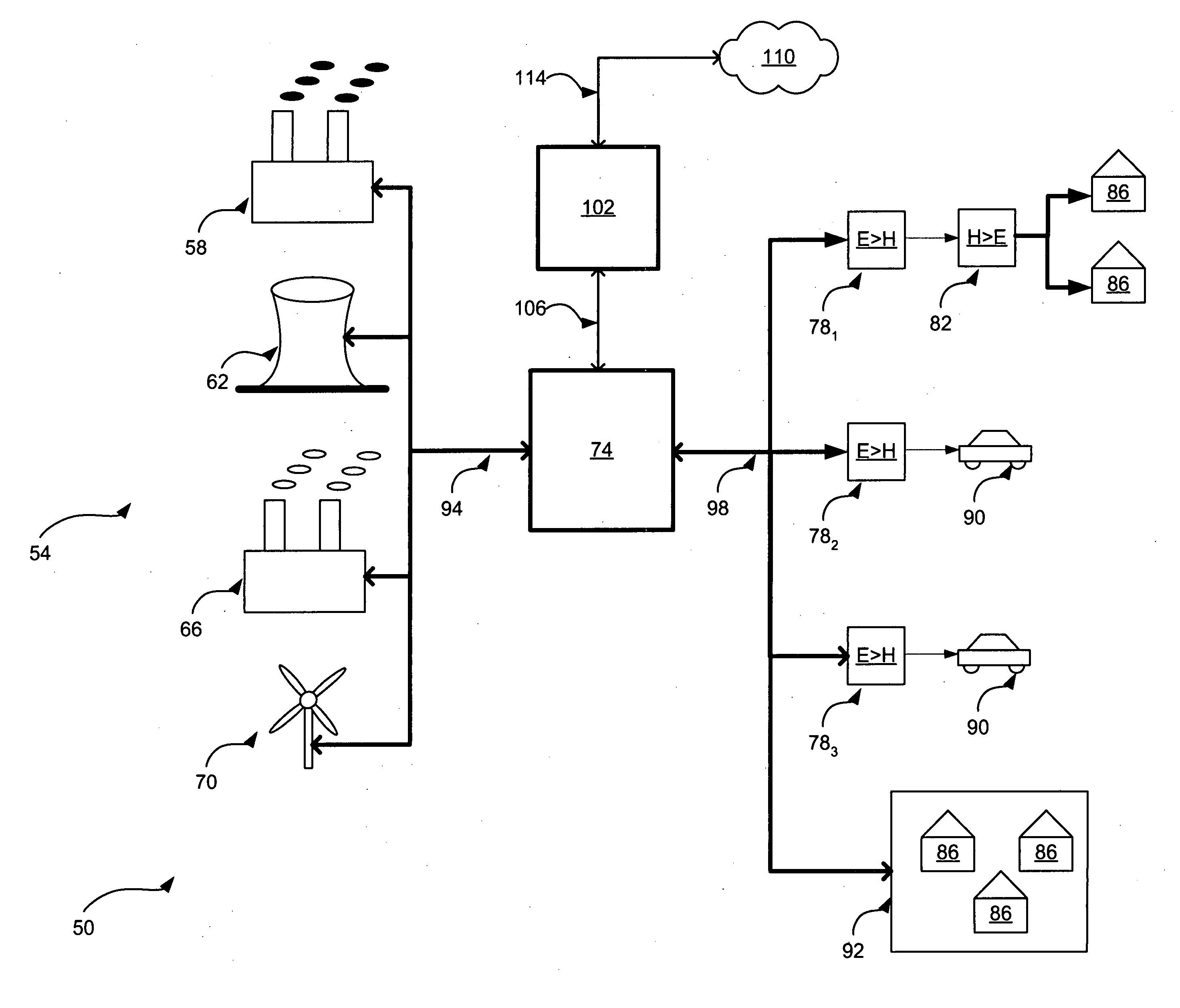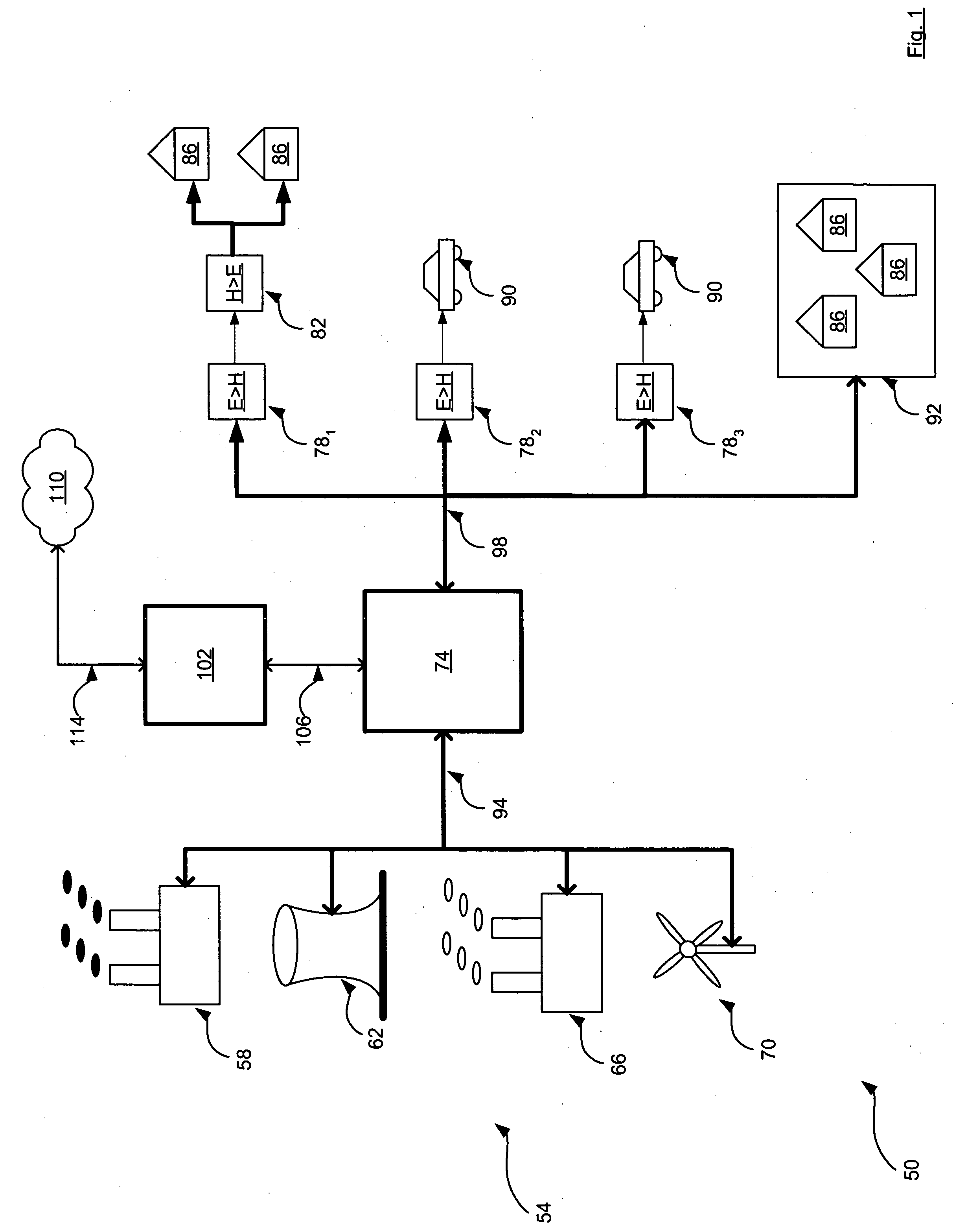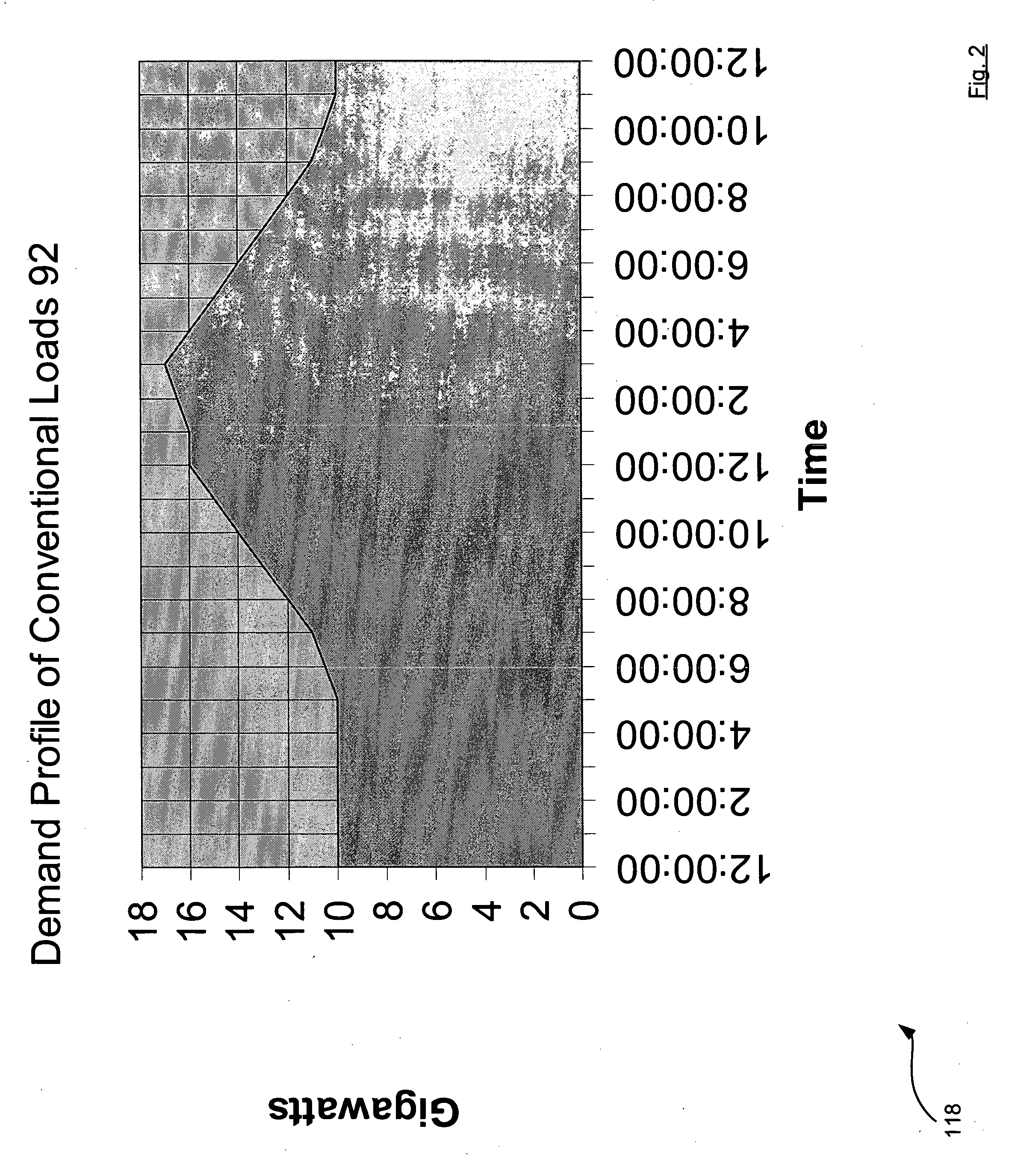Energy network
- Summary
- Abstract
- Description
- Claims
- Application Information
AI Technical Summary
Benefits of technology
Problems solved by technology
Method used
Image
Examples
Embodiment Construction
[0073] Referring now to FIG. 1, an energy network is indicated generally at 50. Network 50 includes a plurality of electrical generating stations 54. In a present embodiment, electrical generating stations include a coal power plant 58, a nuclear power plant 62, a natural gas power plant 66, and a wind-farm 70. As will be discussed in greater detail below, each electrical generating station 54 has a profile relating to the amount of energy it can generate, and another profile relating to the environmental pollutants associated with that energy generation.
[0074] Network 50 also includes a power grid 74, which is substantially the same as any conventional electrical power distribution grid, including transmission lines, power stations, transformers, etc. as is currently known or may become known.
[0075] Network 50 also includes a plurality of electrolysers 78, that are connected to grid 74, and which are operable to convert electricity from grid 74 into hydrogen, and store that hydro...
PUM
 Login to View More
Login to View More Abstract
Description
Claims
Application Information
 Login to View More
Login to View More - R&D
- Intellectual Property
- Life Sciences
- Materials
- Tech Scout
- Unparalleled Data Quality
- Higher Quality Content
- 60% Fewer Hallucinations
Browse by: Latest US Patents, China's latest patents, Technical Efficacy Thesaurus, Application Domain, Technology Topic, Popular Technical Reports.
© 2025 PatSnap. All rights reserved.Legal|Privacy policy|Modern Slavery Act Transparency Statement|Sitemap|About US| Contact US: help@patsnap.com



